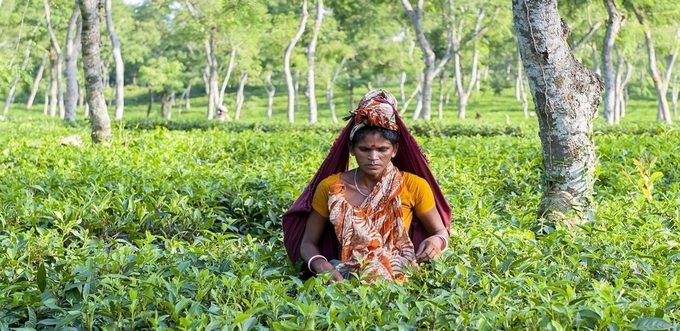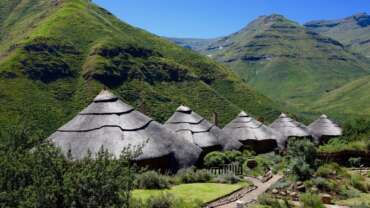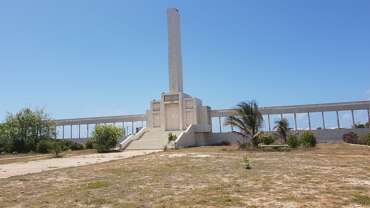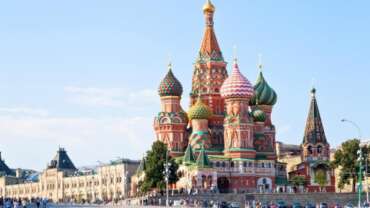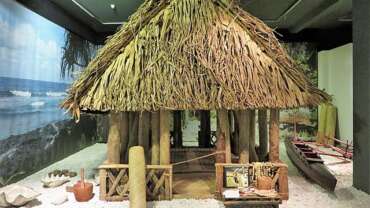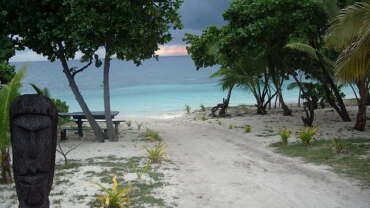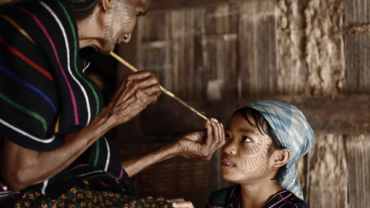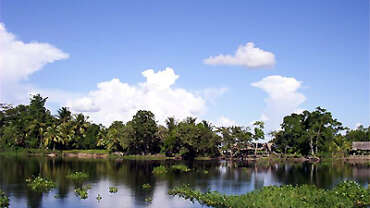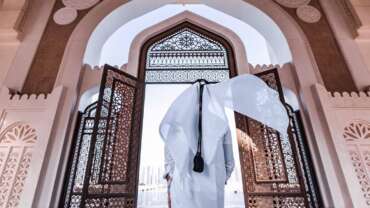Bangladesh Charity Challenges - Land of unspoiled Nature
Bangladesh creates an unforgettable impression of a land of peace, tranquility and enormous beauty; Bangladesh is the land of hundreds of serpentine rivers, crystal clear water lakes surrounded by evergreen hills, luxuriant tropical rain forests, beautiful cascades of green tea gardens.
In Bangladesh located the natural and World’s largest mangrove forest-a World Heritage home of the Royal Bengal Tigers and other wild lives; World’s longest natural unbroken sea beach, rich cultural heritage, relics of ancient Buddhist civilizations; Bangladesh have colorful ethnic minorities with their primitive life style and culture; old terracotta mosques, temples, churches, historic monuments archeological sites; The best tourism assets Bangladesh have friendly and lively peoples and hidden beauty everywhere. Bangladesh is the Largest delta in the world which rises from the Bay of Bengal and goes up to the footsteps of the Himalayas.
Bangladesh is a country where grass is so green, sky is so blue and the health is so clean. Dressed down in saffron, white, and green, flowing with the love of its natives and travelers, there is nothing quite like India. With just one touch on the rich soil, a certain sense of belonging is felt on an best India tours.
While some love the rush of its snake-like lanes, where the aroma of cutting chai, and spices keep on pulling, others fall deep in the ocean of monuments. There are a few who think there is nothing better than the village life others can’t survive a day without the luxuries of the modern city. There is no perfect way to relish what the nation holds in its four directions, but we can make things easy.
Even if a traveler tries, the astounding experiences bejeweled in India happen to be never-ending. Which is why they have a choice to pick from a plethora of India holiday packages to have the most heart-warming vacation.
History of Bangladesh
The history of Bangladesh is often described as a history of conflicts, power shifts and disasters. The earliest historical references to political life in the Bangladesh occur in writings recounting Alexander the Great’s invasion of India in 326 BCE (Before the Common Era). Greek and Latin historians hypothesized that Alexander the Great withdrew from India anticipating the valiant counter attack from the empires of the Bengal region.
The first Muslims came to the area around 13th Century CE seizing control and establishing independent rule. During the 15th Century many European traders began coming to the region. The Portuguese came first, followed by the Dutch, French and then the British. At first the Europeans exerted only economic influence over South Asia, but by the late 1750’s with the defeat of the last Muslim leader of Bengal, the British imposed political rule over the region as well. The British would control the area known as West Bengal for nearly two hundred years.
In 1945, at the close of World War II, the British were strongly pressured to reduce the size of their empire. Viceroy Lord Mountbattan was assigned the task of restoring the subcontinent’s sovereignty. He worked closely with Mahatma Gandhi to unite the two major religious groups of the area, Hindus and Muslims. Despite Gandhi’s even-handed approach, Muslims were concerned that an independent India would be dominated by Hindus. Considering an agreement between the two groups to be impossible, Mountbatten decided to partition the subcontinent. In June 1947 the United Kingdom declared it would grant full dominion status to two successor states: India and Pakistan. India would become the Hindu state and Pakistan, the Muslim state. The latter would consist of two non-continuous areas: Punjab in the west and Bengal in the east. For months following the partition, a horrific bloody exodus took place as Hindus moved out of both wings of Pakistan and into India; conversely, Muslims moved out of India and into the new Muslim states.
The two regions became known as West Pakistan (Punjab) and East Pakistan (Bengal). Besides sharing the Muslim faith the two areas had little in common. They were separated by nearly 1,600 km of Indian land, spoke different languages (Urdu in the West, Bangla in the East) and had different cultural histories. There were large economic disparities between East and West Pakistan, which fueled resentment among the citizens of East Pakistan. Further, it was felt by many in the East that the country administrated unfairly by those in West Pakistan, where the country’s capital was located. The final blow came when the government declared that ‘Urdu and only Urdu’ would be the national language of all Pakistan. This was a language that virtually no one in East Pakistan spoke.
Bangladesh becomes an Independent Nation
The Bangla-speaking Bengali nationalists and academicians decided it was time to assert them. The issue of national language quickly built into one of self-government. When a political party that espoused separation of West and East Pakistan won a majority in the 1971 national elections, the President of Pakistan refused to open the National Assembly, effectively repudiating the election result. Riots quickly followed and the independent State of Bangla-desh (desh = land or country) was quickly announced. Pakistan, in turn, sent troops to quell the uprising.
The war that followed was one of the shortest and bloodiest of this century. The Pakistani army quickly occupied all major towns and violently suppressed those favoring separation. Border clashes between India and Pakistan intensified as Indian-trained guerrillas began crossing the border into West Bengal to support the independence movement. The Pakistani Air Force made a pre-emptive attack on Indian forces in December 1971 and precipitated an all out war between the India and Pakistan. The Pakistani army found itself being attacked from all directions. The war officially lasted nine months with causality estimates topping three million. When it was all over, Bangladesh had become the 139th country in the world.
People of Bangladesh
Ethnic groups
The vast majority of the population of Bangladesh is Bengali—a term describing both an ethnic and a linguistic group. The Bengali people are historically of diverse origin, having emerged from the confluence of various communities that entered the region over the course of many centuries. The Vedda peoples were perhaps the earliest group to settle in the area. According to some ethnologists, they were followed by peoples from the Mediterranean and neighbouring areas, particularly those who spoke Indo-European languages. During the 8th century ce, persons of Arab, Persian, and Turkish origin moved in large numbers to the subcontinent. By the beginning of the 13th century, they had entered what is now Bangladesh. The contention that contemporary Bengali Muslims are all descended from lower-caste Hindus who had converted to Islam, then, is clearly incorrect; a substantial proportion are descendants of Muslims who reached the subcontinent from elsewhere.
Non-Bengalis—consisting primarily of smaller indigenous groups—constitute only a tiny fraction of the population. Most of these peoples inhabit the Chittagong Hill Tracts in the southeast, the most sparsely settled area of the country. Some of the groups are related to the peoples of Myanmar (Burma), and many follow Buddhism, although both Hinduism and Christianity also have a significant following. Of the dozen or so ethnolinguistic groups of the Chittagong Hill Tracts, the largest are the Chakma, the Marma (Magh or Mogh), the Tripura (Tipra), and the Mro; the Khomoi (Kumi), the Kuki, and the Mizo (formerly called Lushai) are among the smaller groups. Since the mid-1970s ethnic tensions and periodic violence have marked the Chittagong Hill Tracts, where many peoples long resident in the area have objected to the influx of Muslim Bengali settlers.
Indigenous minority peoples in other parts of Bangladesh include the Santhal, the Khasi, the Garo, and the Hajang. The Santhal peoples live in the northwestern part of Bangladesh, the Khasi in Sylhet in the Khasi Hills near the border with Assam, India, and the Garo and Hajang in the northeastern part of the country.
Languages
Bengali (Bangla), the national language of Bangladesh, belongs to the Indo-Aryan group of languages and is related to Sanskrit. Like Pali, however, and various other forms of Prakrit in ancient India, Bengali originated beyond the influence of the Brahman society of the Aryans. The Pala rulers of Bengal (8th to 12th century)—who were Buddhists and whose religious language was Pali—did not inhibit the emergence of a colloquial tongue known as Gaudiya Prakrit, the language from which Bengali developed.
Bengali is the mother tongue of almost the entire population of Bangladesh. However, the indigenous minority groups have their own languages and dialects, some of which are Tibeto-Burman languages. English, an Indo-European language, is spoken in urban centres and among educated groups.
The Bengali language has two distinct styles: sadhu bhasa, the literary style, which contains many words derived from Sanskrit, and calit bhasa, the colloquial style, which is the standard medium of informal discourse, both spoken and written. Until the 1930s sadhu bhasa was used for all printed matter, but calit bhasa is now the basic form used for contemporary literature. There also are a number of dialects. Bengali contains many loanwords from Portuguese, English, Arabic, Persian, and Hindi.
Religion
Most of the people of Bangladesh follow the religion of Islam, which was made the official religion by a 1988 constitutional amendment. The arrival of Muslims in Bengal at the beginning of the 13th century and the rapid increase in their strength and influence permanently changed the character and culture of the area. When the Muslims first arrived, Hinduism was by far the dominant religion, although there were pockets of Buddhists and a few adherents of local religions. The Hindus remained in the majority through the Mughal period (16th to 18th century). Even as late as the early 1870s, there were more than 18 million Hindus in Bengal, compared with about 16 million Muslims. From the 1890s onward, however, the weight began to shift toward the Muslims.
There were several reasons for the increase in the proportion of the Muslim population. Perhaps the most significant was the activity of ascetics and Sufis (practitioners of Sufism, a mystical form of Islam), who won converts among lower-caste Hindus. Also significant was an influx of Muslims from northern India and from other countries.
Most Muslims are Sunni, but there are a small number of Shiʿis, primarily descendants of immigrants from Iran. Hindus form a significant minority, while Roman Catholics and Buddhists constitute just a tiny fraction of the population. Of the tribes in the Chittagong Hill Tracts, the Chakma, Marma, and Mro are mostly Buddhists. Portions of the Kuki, Khomoi, and Mro communities practice local religions. While most of the Mizo are Christians, the Tripura are Hindus.
Art & Culture of Bangladesh
Bangladesh is a melting pot of races. She, therefore, has a mixed culture. Her deep rooted heritage is amply reflected in her architecture, literature, dance, drama, music and painting. Bangladeshi culture is influenced by three great religions- Hinduism, Buddhism and Islam in successive order, with Islam having the most pervading and lasting impact. Like a colorful montage, the cultural tradition of the country is a happy blending of many variants, unique in diversity but in essence greatly symmetrical.
Festivals
A series of festivals varying from race to race are observed here. Some of the Muslim rites are Eid-e-Miladunnabi, Eid-ul-Fitr, Eid-ul-Azha, Muharram etc. Hindus observe Durga Puja, Saraswati Puja, Kali Puja and many other pujas. Christmas (popularly called Baradin in Bangla ) is observed by Christians. Also there are some common festivities, which are observed countrywide by people irrespective of races. Pahela Baishakh (the first day of Bangla year) is such a festival. National festivals are Independence Day (26th March), 21st February (the National Mourning Day and World Mother Language Day), The Victory Day (16th December), Rabindra & Nazrul Jayanti etc.
Literature
Bangalees have a rich literary heritage. The earliest available specimen of Bengali literature is about a thousand years old. During the mediaeval period, Bengali Literature developed considerably with the patronage of Muslim rulers. Chandi Das, Daulat Kazi and Alaol are some of the famous poets of the period. The era of modern Bengali Literature began in the late nineteenth century Rabindranath Tagore, the Nobel Laureate is a vital part of Bangalee culture. Kazi Nazrul Islam, Michael Madhusudan Datta. Sarat Chandra Chattopadhaya, Bankim Chandra Chattopadhaya, Mir Mosharraf Hossain and Kazi Ahdul Wadud are the pioneers of modern Bengali Literature.
Music
The traditional music in Bangladesh shares the perspectives of that of the Indian sub-continent. Music in Bangladesh can be divided into three distinct categories -classical, folk and modern. The classical music, both vocal and instrumental is rooted in the remote past of the sub-continent. Ustad Alauddin Khan and Ustad Ayet Ali Khan are two names in classical instrumental music who are internationally known.
The store of folk song abounds in spiritual lyrics of Lalan Shah, Hasan Raja, Romesh Shill and many anonymous lyricists. Bangla music arena is enriched with Jari, Shari, Bhatiali, Murshidi and other types of folk songs. Rabindra Sangeet and Nazrul Sangeet are Bangalees’ precious heritage. Modern music is also practiced widely. Contemporary patterns have more inclinations to west. Pop song and band groups are also coming up mainly in Dhaka City.
Bangladesh has a good number of musical instruments originally of her own. Originally country musical instruments include, Banshi (bamboo flute), Dhole (wooden drums), Ektara (a single stringed instrument), Dotara (a four stringed instrument), Mandira (a pair of metal bawls used as rhythm instrument), Khanjani, Sharinda etc. Now-a-days western instruments such as Guitar, Drums, Saxophone and Synthesizer etc. are being used alongside country instruments.
Painting
There is a rich tradition of modern painting which was pioneered by Zainul Abedin, Kamrul Hassan, Anwarul Haque, Shafiuddin Ahmed and S. M. Sultan. Zainul Abedin earned international fame for his sketches on famine of 1943 in Bangladesh. Other famous artists of Bangladesh are Abdur Razzak, Qayyum Chowdhury, Murtaza Baseer, Aminul Islam, Debdas Chakraborty, Kazi Abdul Baset, Syed Jahangir, and Mohammad Kibria
Drama
Drama in Bangladesh has an old tradition and is very popular. In Dhaka more than a dozen theater groups have been regularly staging locally written plays as well as those adopted from famous writers, mainly of European origin. Popular theatre groups are Dhaka Theatre, Nagarik Nattya Sampraday and Theatre. In Dhaka, Baily Road area is known as ‘Natak Para’ where drama shows are regularly held. Public Library Auditorium and Museum Auditorium are famous for holding cultural shows. Dhaka University area is a pivotal part of cultural activities.
Dance
Classical forms of the sub-continent predominate in Bangladeshi dance. The folk, tribal and Middle Eastern traits are also common. Among the tribal dances, particularly popular are Monipuri and Santal. Rural girls are in the habit of dancing that does not require any grammar or regulations. Bangla songs like jari and shari are presented accompanied with dance of both male and female performers.
Jatra
Jatra(Folk Drama) is another vital chapter of Bangalee culture. It depicts mythological episodes of love and tragedy. Legendary plays of heroism are also popular, particularly in the rural areas. In near past jatra was the biggest entertainment means for the rural Bangalees and in that sense for 80% of the population since the same percentage of the population lived in rural Bangladesh. Now-a-days jatra has been placed in the back seat in the entertainment era. Gradually western culture is occupying the place of traditional culture like jatra.
Traditional Transportation Means
There are some transportation means that are parts of culture of Bangladesh. In rural areas bullock carts, buffalo carts and tomtoms(horse carts) are commonly used. In old Dhaka once tomtom was a common vehicle and still it is found, though rare. Bicycles are used both in rural and urban areas. Palki (a box-like vehicle carried on shoulders by six men) is a wedding transportation means. Brides are carried to the bridegrooms’ places by Palki. Being a land crisscrossed by rivers, Bangladesh has a wide-ranged tradition of ferry transport. Wooden boat popularly called nawka is a vital means of rural communication. Rickshaw is a very common vehicle to Bangladeshis.
Clothing
Bangladeshi women habitually wear Sarees. Jamdani was once world famous for it’s most artistic and expensive ornamental fabric. Moslin, a fine and artistic type of cloth was well-known worldwide. Naksi Kantha, embroidered quilted patchwork cloth produced by the village women, is still familiar in villages and towns simultaneously. A common hairstyle is Beni (twisted bun) that Bangalee women are fond of. Traditionally males wear Panjabis, Fatuas and Pajamas. Hindus wear Dhuty for religious purposes. Now-a-days common dresses of males are shirts and pants.
Government and non-government organizations like Bangla Academy, Nazrul Institute, Bangladesh Shilpakala Academy, Fine arts Institute, Chhayanat etc. play significant role to flourish Bangladeshi art and culture providing encouragement in music, drama, dance, recitation, art etc. Many other cultural organizations are also popularizing Bangladeshi art and culture.



